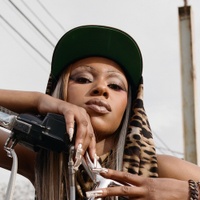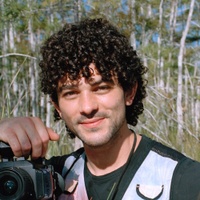On fighting for your vision
Prelude
Collina Strada isn’t just a fashion label, it’s also a platform for social issues and awareness. Created by Hillary Taymour, the brand’s main concern is staying true to her craft, and staying on course to becoming a fully sustainable and radically transparent brand in the near future. Based and manufactured in New York, the brand’s cult status core pieces transcend trends. Season after season, Collina Strada’s goal remains the same: to encourage self-reflection through clothing. How can you be the best version of yourself today?
Conversation
On fighting for your vision
Fashion designer Hillary Taymour (Collina Strada) discusses choosing your battles, learning from your peers, and the sustainability versus accessibility bind.
As told to Jun Chou, 1668 words.
Tags: Fashion, Independence, Business, Money, Adversity.
How was Fashion Week?
It was good. It was a lot. It was one of the hardest shows I’ve done in a long time, so I think I am very tired in general. The concept itself overshadowed the clothes, in a way. But all is well. It was such a beautiful show.
Did it match with your original vision?
They never do. One time I was at a Met Gala after party and I was talking to Marc Jacobs. He was like, “Do you ever feel like your shows aren’t 100% of what you wanted?” And I was like, “Girl. If I’m lucky, I get 10%.” But this show I think I got about 30%, which is pretty high for me. So can’t complain.
How does it feel to talk to people like Marc Jacobs who have been to the game for way longer, and relate to each other in this way?
I mean, we all have the same fucking job. It’s not that deep. Designers are designers. Some people say never meet your heroes, but all the ones I have met… I have met most of the designers in the world, let’s just put it that way. There’s a handful I would not care to hang out with again. Some of them have their own form of working. There is a level of understanding and a way you can connect. We connect because we live on the same timeline, we live on the same calendar—and the calendar is a fucking grueling, ridiculous way to live.
You talk a lot about how you want Collina Strada to be ethical and conscious and intentional. Do you feel alone in that? Or do you find a lot of allies in the industry?
Sure. People try. But I think I strived for this version of life that is unattainable, so that’s on me.
It kind of goes back to idea that you get 10% or 30%, if you’re lucky.
Totally. I want the world to be amazing and I want to be able to have everyone get paid fair wages to make clothes, and I want the clothes to be affordable. And that’s just not a reality that’s real. The problem of sustainability is also accessibility, and you can’t pay someone fair wages and have someone get accessible prices. I don’t care who says that you can. You can’t. You think you want $20 an hour to sew clothes? Great. How long do you think it takes to sew this jacket? Then how long do you think it costs for me to make up this jacket, and this pattern, and this grade and walk of the fabric, and do this and that? It’s not, “how much do you want to pay for the jacket?” You want to pay $150 to make it accessible? The fabric costs $75. Like, where’s the money? In a pretty, pretty world, the government would pay for all of that.
In a pretty world, we would all be making living wages.
Yeah, exactly. Or we’d just be chilling.
You’ve done a lot of collaborations with brands that are not independent, like Baggu and Converse. Is that a way for you to make fashion more accessible? How do you approach these collaborations creatively?
Everyone is so unique and different because it’s such a partnership with the brand. What do they make? What is their customer? I do so many collabs because I take it so fucking seriously. When you get approached by these companies, they kind of have in mind what they want you to be doing already. I basically just try to make it as cool as possible. And then I just go in, like, “Okay, how can we make this the most sustainable we can? How can we really push what you’re doing and elevate it in a way in terms of sustainability?” Typically I’ll go to the table and [ask], “Okay, what materials have you not been able to get approved yet, or use yet, because you haven’t been able to test them yet?” Etc. [I ask] to be the test dummy for these materials. That’s kind of how I go about it.

And then what is the design process like?
A lot of fighting. You have to fight for what you want in this industry. They’ll be like, “Oh, that’s too similar to this, and this is too similar to that.” Working with a corporation [involves] political levels of letting you do anything, so if you don’t fight for the best possible product you’re not going to get a great product. When I say corporate, I mean giants. I’m only talking about giants. Other people, it’s much easier. But the giants want to design it for you, and then you get a watered-down product of something that looks like you, that you would never make. Which is really fun for me, because I am very emotional about product.
I basically fight to the death in the fucking ring. And then I give up. You have to give in to certain things, so you make allowances and then you negotiate. Everything is about how much development costs you’re using. It’s all formula, essentially, when you’re working on these big collabs. I really try to make sure we’re making the best product possible, because I don’t see the point in introducing new products if it’s not great. So I really, really focus my energy there.

I feel like working with a big corporation is a double-edged sword. They have resources and money, but also something that you have to subscribe to.
But they already have in their head exactly what they want from you before they email you. So you have to convince them what you want, which is definitely not what they want.
Do you have fun in the ring?
No. No, no. No. I’m a woman; it’s never fun for me. If I was a man, I wouldn’t have to fight like that. And that’s just a fact. They’d be like, “Oh yeah, you’re totally right. No, he definitely needs that. He won’t do it unless it’s like this, so we have to do it this way. And he deserves that.”
Do you feel like there’s a particular way you’ve learned to fight as a woman in the industry?
By just always being right? And having case studies that are right…
So showing your receipts?
Yeah, receipts are important.
Have you learned things about choosing your battles?
You have to choose your battles. It has to be strategic… The whole system is a balance.
How do you let these emotional battles not drain you creatively?
I have to have certain days where I only design and not do other things that day, or else. I can double task all the time, but you can’t double task designing.
What does that look like? Is it locking yourself in a room?
It’s called the weekend. Or Christmas break.
How do you stop yourself from thinking about, “Okay, the numbers and the invoices.”
You never stop. But that’s why you have to design through that fog, or else you wouldn’t make things that sell.
I saw that you were doing fashion business classes on OnlyFans. How’s that going?
When I work with people, I want to make it authentic and not feel cheesy, and I want to actually use it for good instead of just vanity. So that’s what I chose to do with it. I feel like it gave back to the industry a little bit, especially during this time it feels a bit rough for people.
Do you think that learning from people in this way is something you would’ve wanted when you were starting out?
Yeah. I mean, I have always learned from people in this way. All my friends are designers; we’re always learning from each other. I think it’s really important to talk to each other and be like, “This happened to me,” and “This happened to me too.” It’s super important.
What’s a lesson that you feel like you learned the hard way?
So many things… There’s not one, because it’s just so many fucking things. You can make $20,000 mistakes every single day if you’re not careful.

I read in an interview that you dress and design for your inner child. Can you describe your inner child for us?
Disturbed. I came out six weeks early. I never really understood how to be a child; I always wanted to be an adult. I’ve lived before, if that makes sense. I’m very much not my first life, like [I] really came out ready… All we had was the Gap or Abercrombie—all these very common options in the 90s. I always wanted to dress in certain ways and [to be] colorful, and I just didn’t have that option. So I’m really just dressing for the options that I didn’t have when I was younger.
I have older sisters, so there was a place in the garage we called the dress-up closet of things that didn’t fit them. And I distinctly remember, when I was 2 years old, dressing myself for the first time. And there’s a photo of me and it’s just exactly what you’d think 2-year-old me would dress like. Super layered, super colorful. I had my backpack on, I had like six shirts on, I had pants with a skirt on top. I’ve never changed.
Hillary Taymour recommends five places to get out in nature:
Fish Camp Falls in Sierra National Forest
Boy Scout Tree Trail in California Redwoods
Barker Dam Hike in Joshua Tree
Kaaterskill Falls in New York
Yellow Mounds Overlook in Badlands National Park
- Name
- Hillary Taymour
- Vocation
- fashion designer, creative director (Collina Strada)
Some Things
Pagination



